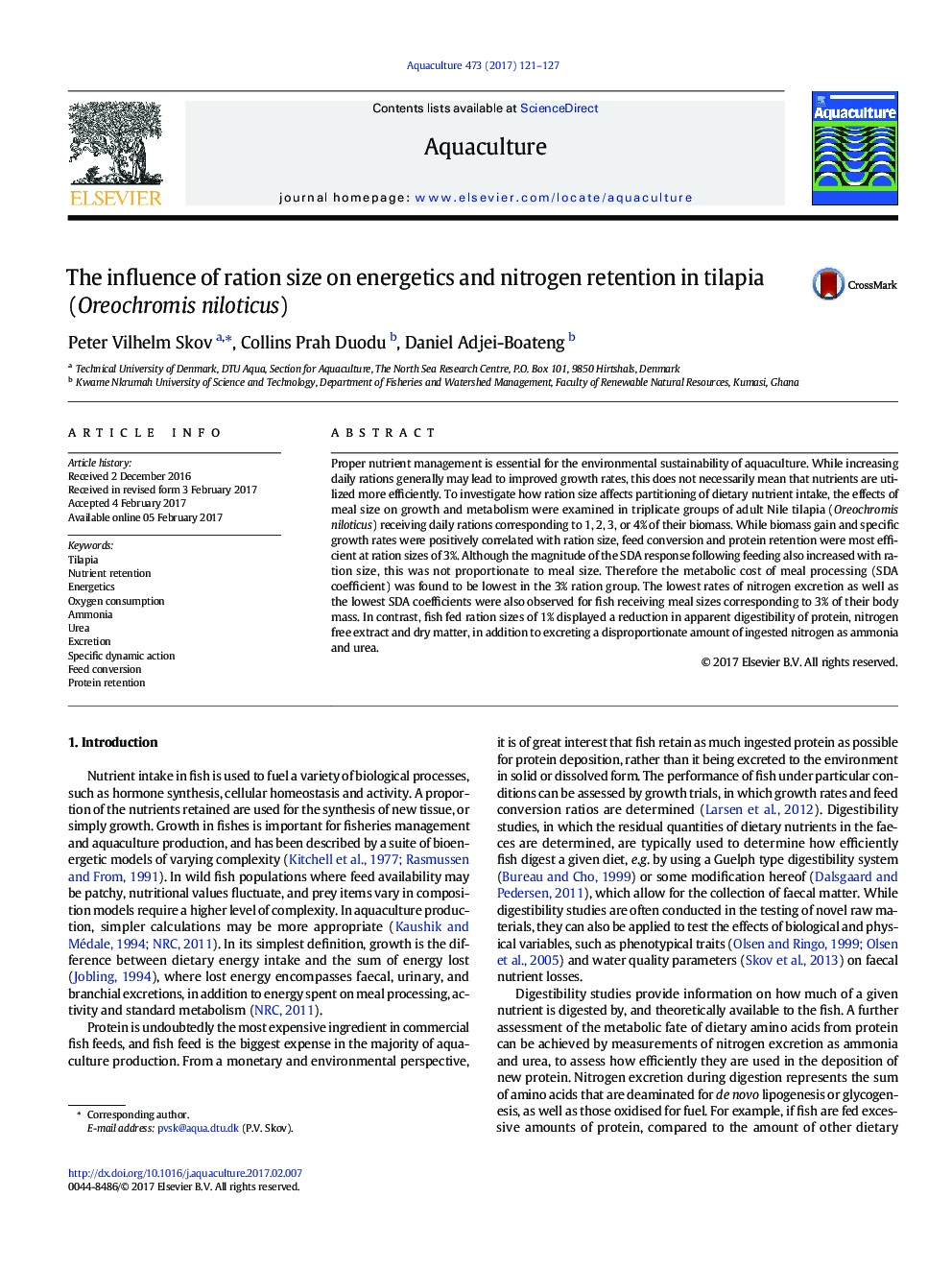| Article ID | Journal | Published Year | Pages | File Type |
|---|---|---|---|---|
| 5539046 | Aquaculture | 2017 | 7 Pages |
Abstract
Proper nutrient management is essential for the environmental sustainability of aquaculture. While increasing daily rations generally may lead to improved growth rates, this does not necessarily mean that nutrients are utilized more efficiently. To investigate how ration size affects partitioning of dietary nutrient intake, the effects of meal size on growth and metabolism were examined in triplicate groups of adult Nile tilapia (Oreochromis niloticus) receiving daily rations corresponding to 1, 2, 3, or 4% of their biomass. While biomass gain and specific growth rates were positively correlated with ration size, feed conversion and protein retention were most efficient at ration sizes of 3%. Although the magnitude of the SDA response following feeding also increased with ration size, this was not proportionate to meal size. Therefore the metabolic cost of meal processing (SDA coefficient) was found to be lowest in the 3% ration group. The lowest rates of nitrogen excretion as well as the lowest SDA coefficients were also observed for fish receiving meal sizes corresponding to 3% of their body mass. In contrast, fish fed ration sizes of 1% displayed a reduction in apparent digestibility of protein, nitrogen free extract and dry matter, in addition to excreting a disproportionate amount of ingested nitrogen as ammonia and urea.
Keywords
Related Topics
Life Sciences
Agricultural and Biological Sciences
Aquatic Science
Authors
Peter Vilhelm Skov, Collins Prah Duodu, Daniel Adjei-Boateng,
